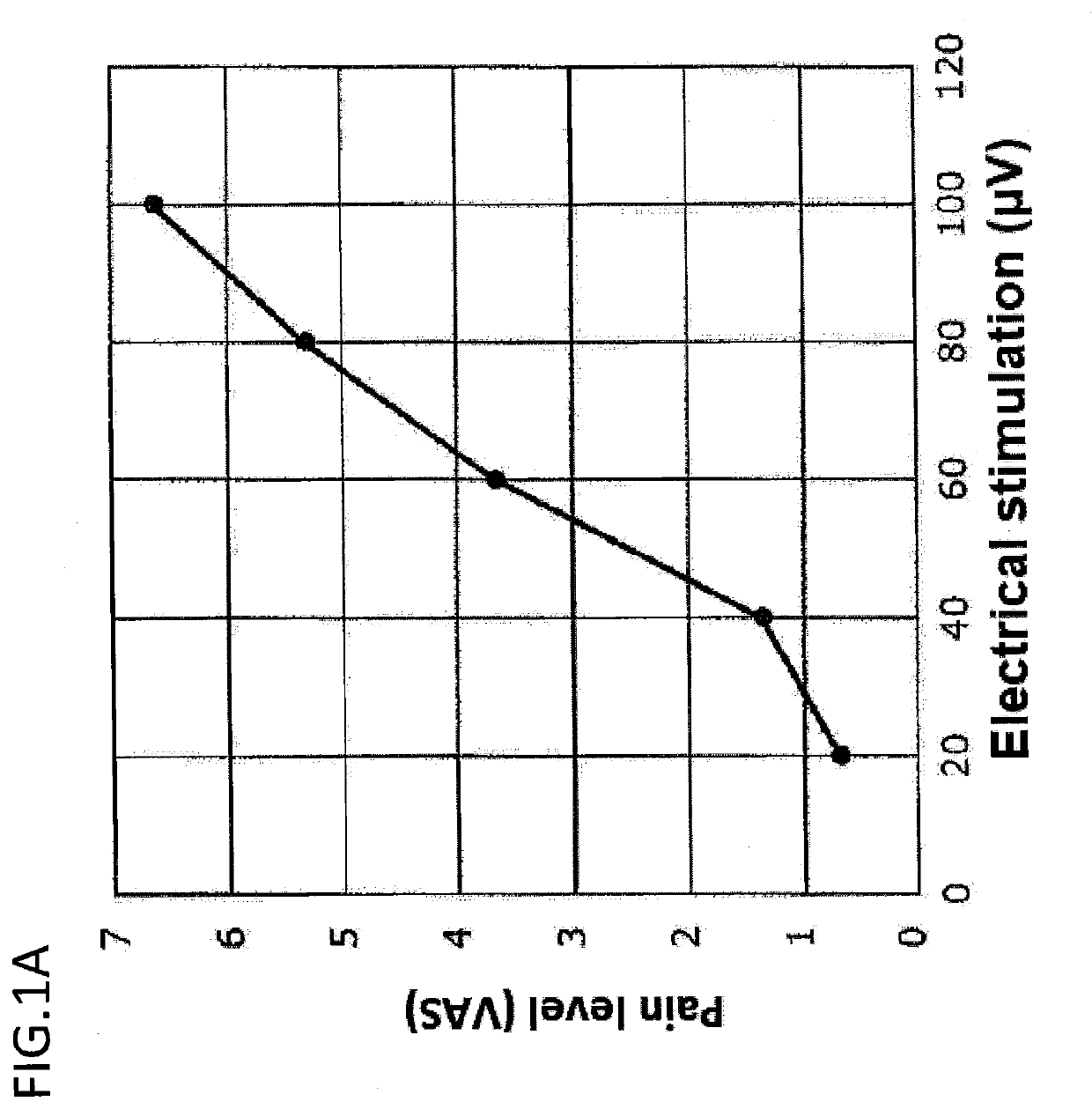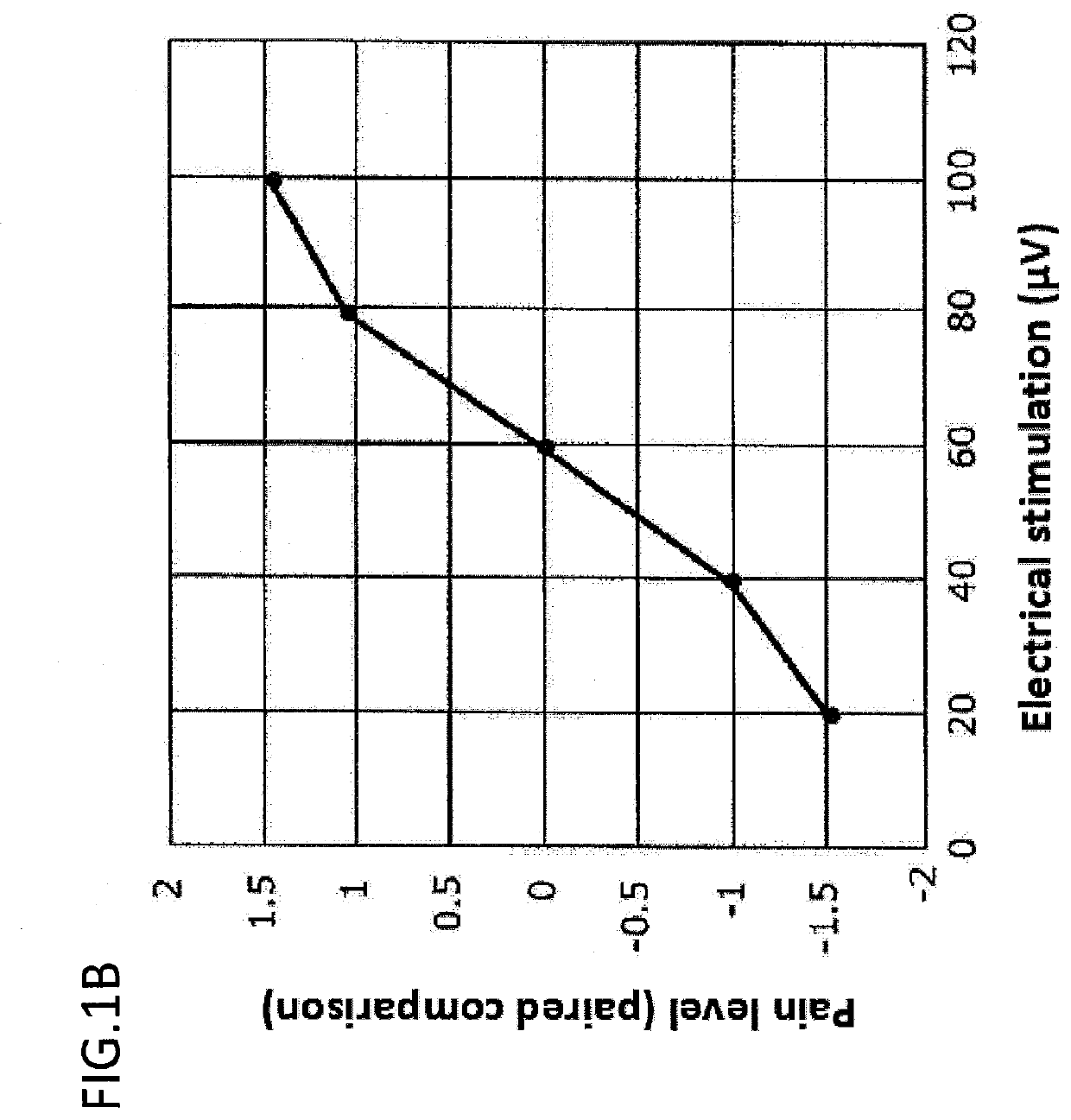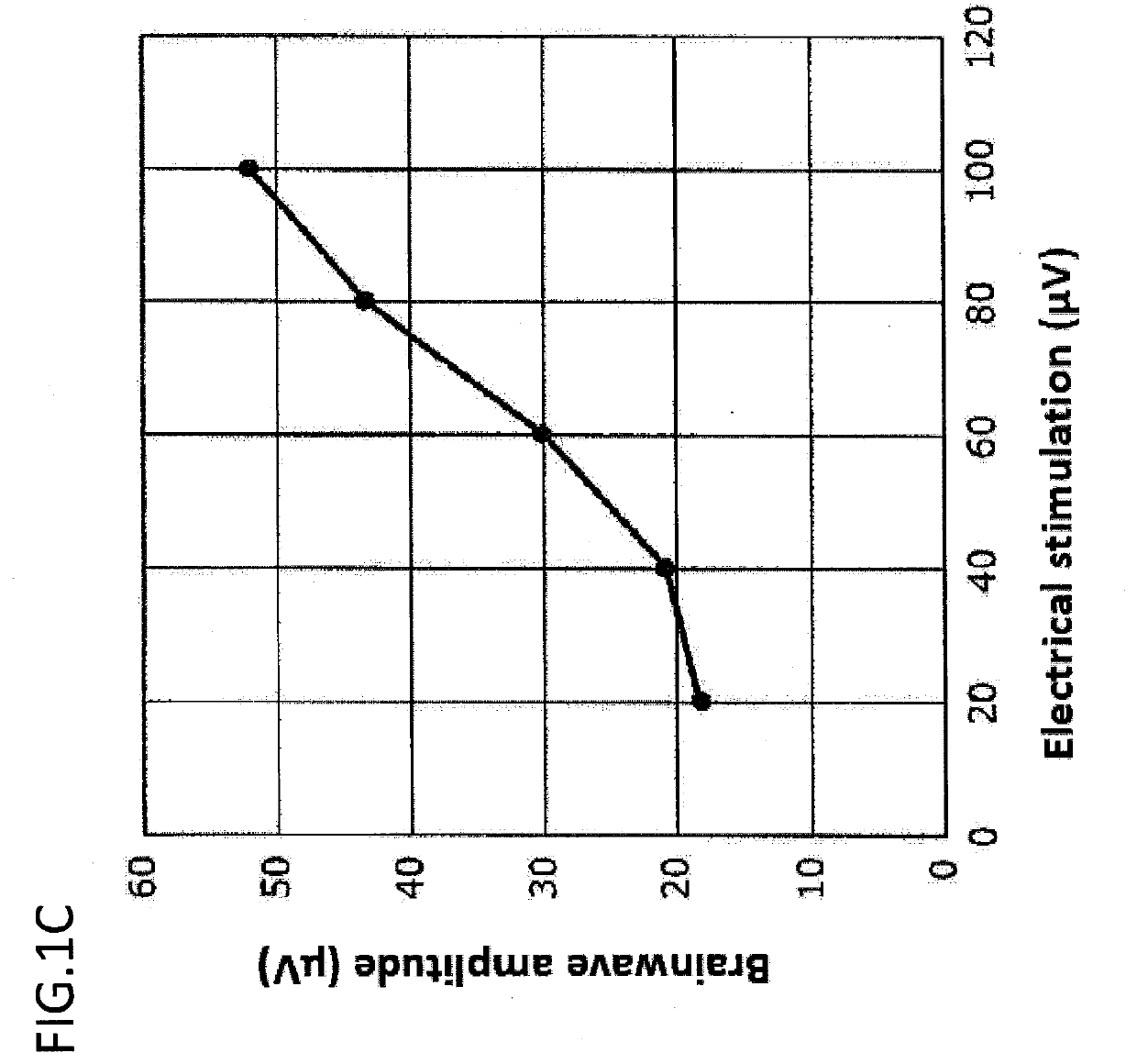Pain determination using trend analysis, medical device incorporating machine learning, economic discriminant model, and iot, tailormade machine learning, and novel brainwave feature quantity for pain determination
- Summary
- Abstract
- Description
- Claims
- Application Information
AI Technical Summary
Benefits of technology
Problems solved by technology
Method used
Image
Examples
example 1
Analysis
[0807]This Examples conducted EEG trend analysis. This demonstrates that determination of subjective pain, which has difficult with simple association of data of conventional art, can be conducted more accurately in line with temporal changes.
[0808](Materials and Methods)
[0809](Participants)
[0810]Separate groups of 32 healthy adult subjects in their 20s to 70s participated in the low temperature pain and high temperature pain experiments. Most participants overlapped in the two groups. Informed consent was obtained from the participants prior to the experiment. All participants self-reported as having no history of a neurological and / or psychiatric illness, or acute and / or chronic pain under clinical drug therapy conditions. This Example was in compliance with the Declaration of Helsinki and conducted under approval of the Osaka University Hospital ethics committee.
[0811]A temperature stimulation system (Pathway; Medoc Co., Ltd., Ramat Yishai, Israel) was used to apply high ...
example 2
iation of Strong Pain and Weak Pain Using Pain Intensity
[0822]This Example demonstrated that strength and weakness of pain can be differentiated from the circumstances such as monotonic increase or monotonic decrease by using pain intensity.
[0823]The trend of mean EEG amplitude and subjective pain evaluation of one participant, using the 40 second averaging method (FIG. 1I) was converted to a pain index. Since a low temperature pain paradigm exhibited a negative correlation between EEG and subjective pain evaluation, the function of the trend of EEG was first inversed, and baseline correction was applied to a reference value by using the mean value for the first three most intense pain stimulations. FIG. 5 shows the results. The zero line (baseline) is strong pain intensity. A negative value indicates alleviation of pain intensity, whereas a positive value indicates increase in pain intensity. The pain used in this case is pain that is considered as subjectively “unbearable” pain.
Pa...
example 3
n of Superiority of Evaluation Depending on Difference in Mean Time Interval (Seconds)
[0826]This Example demonstrated that a difference due to a time interval leads to a significant difference for actually evaluating the difference in subjective pain.
[0827]While 15 seconds and 20 seconds were compared in this Example, the same experiment can be conducted by using other interval of seconds, such as 20 seconds, 30 seconds, and 40 seconds, and the same result is obtained. In particular, 15 seconds was used as an object of comparison because 15 seconds is used in prior studies, while the relationship between pain related brain feature and pain level is understood to exhibit a large inflection around 15 seconds as shown herein.
[0828](Materials and Methods)
[0829]In this Example, data for 15 seconds and 20 seconds was calculated based on the methodology described in Example 1.
[0830](Results)
[0831]The results obtained are shown below.
TABLE 115 second20 secondmeanmeant valuep valueSubjective...
PUM
 Login to View More
Login to View More Abstract
Description
Claims
Application Information
 Login to View More
Login to View More - R&D
- Intellectual Property
- Life Sciences
- Materials
- Tech Scout
- Unparalleled Data Quality
- Higher Quality Content
- 60% Fewer Hallucinations
Browse by: Latest US Patents, China's latest patents, Technical Efficacy Thesaurus, Application Domain, Technology Topic, Popular Technical Reports.
© 2025 PatSnap. All rights reserved.Legal|Privacy policy|Modern Slavery Act Transparency Statement|Sitemap|About US| Contact US: help@patsnap.com



